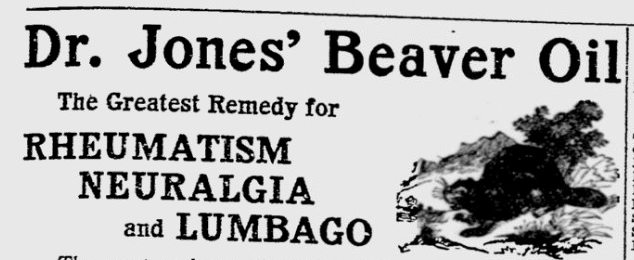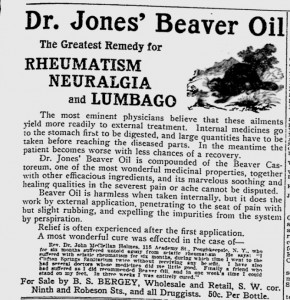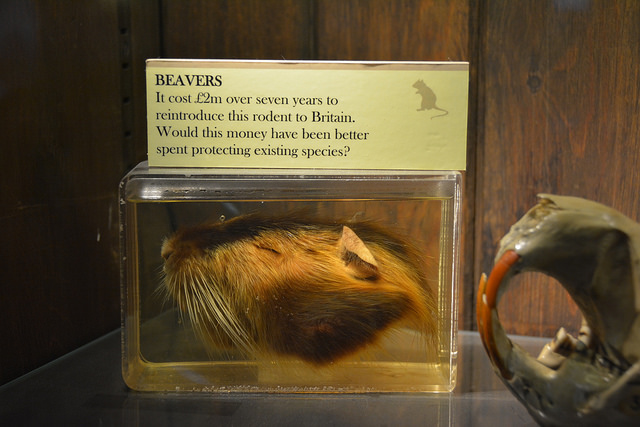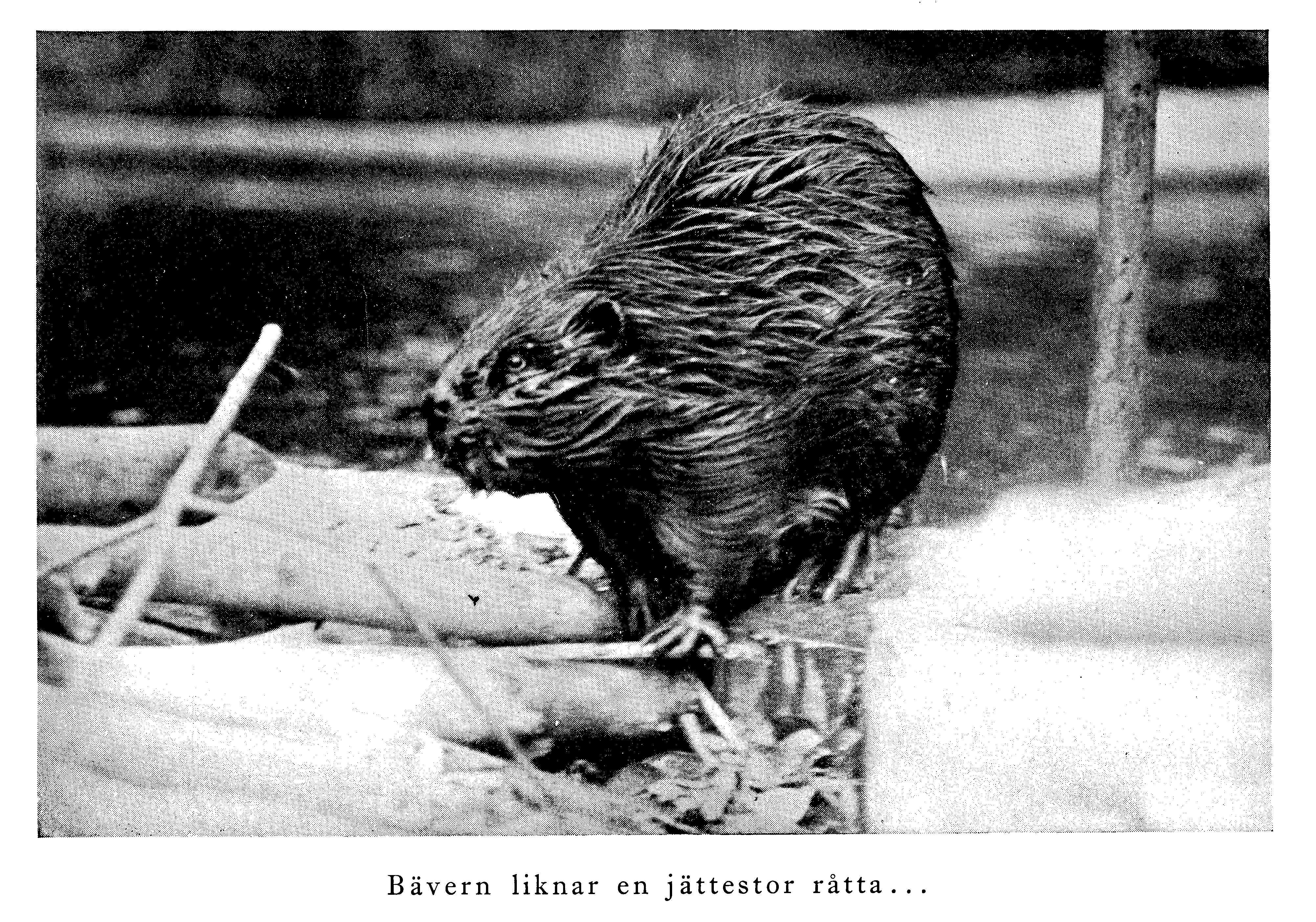
Bottled beaver oil
As a short follow-up to my post about drinking castoreum, I wanted to share some newspaper advertisements I ran across in the Google Newspaper archive. I love ads as historical sources because they give us a unique insight into the way the seller of a product thinks about what they are selling. They may or may not adequately represent the consumer’s views – I certainly have seen ads in print or video that I think are pathetically written and don’t make me want to buy the product at all – but they at least tell us what the producer thinks the consumer wants to hear.
As Ann Anderson has discussed in Snake Oil, Hustlers and Hambones: The American Medical Show, patent medicines (which meant it was a proprietary formula) had saturated the American market by 1850. Thousands of concoctions, some of medicinal value and others with none at all, were available for sale. Many of the mixes contained addictive ingredients like morphine and cocaine – and nearly all of them were prepared with an alcohol base, making my castoreum liquor sound more and more like the old-time medicine.
Castoreum got caught up in this good-health-in-a-bottle movement, just like many other remedies.

One bottler of castoreum was New York Medical University, which was not in fact a university at all, but rather a patent medicine business owned by Dr. J. Walter Scott. There is a fascinating series of write-ups (1, 2, 3) about the business, including pictures of their medicine bottles. It appears that even after the death of Scott in 1870, doctors continued selling “The University Medicines”, including Dr. Seth S. Hance of Baltimore (ad from 1877) and Dr. H. Baer of Charleston (ad on right from 1880).
Castoreum as a University Medicine was marketed as a treatment for impotence. In the 1877 ad, it specifies that it works for both men and women. Castoreum, as far as I know, has no affect at all on sexual medical issues, so this claim was just standard quackery.

A later patent medicine based on castoreum may, however, have lived up to its billing. I found a slew of ads for Dr. Jones’ Beaver Oil from 1907 to 1919 in The Daily Eagle of Reading, Pennsylvania. The Beaver Oil, which was rebranded as Dr. Jones’ Liniment in 1918, was sold as a topical ointment for pain. It was sold as “a necessity in every home” for treating sprains, bruises, soreness, swollen joints, and general aches. Because castoreum contains salicylates, it should have functioned in cream form similar to modern topical pain creams with aspirin, which have anti-inflammatory and anti-pain effects.
So this beaver oil was no snake oil. It might actually have worked!




